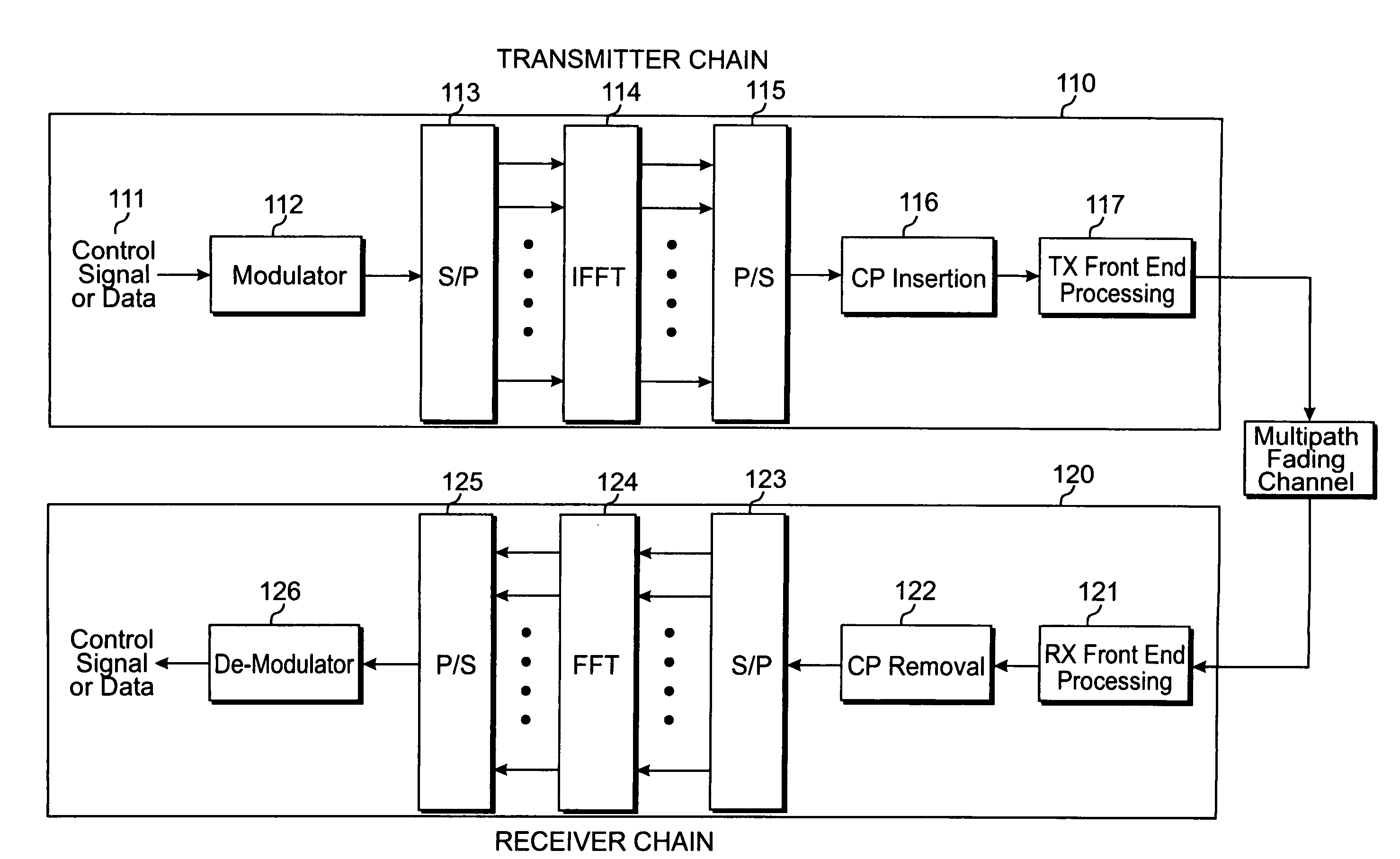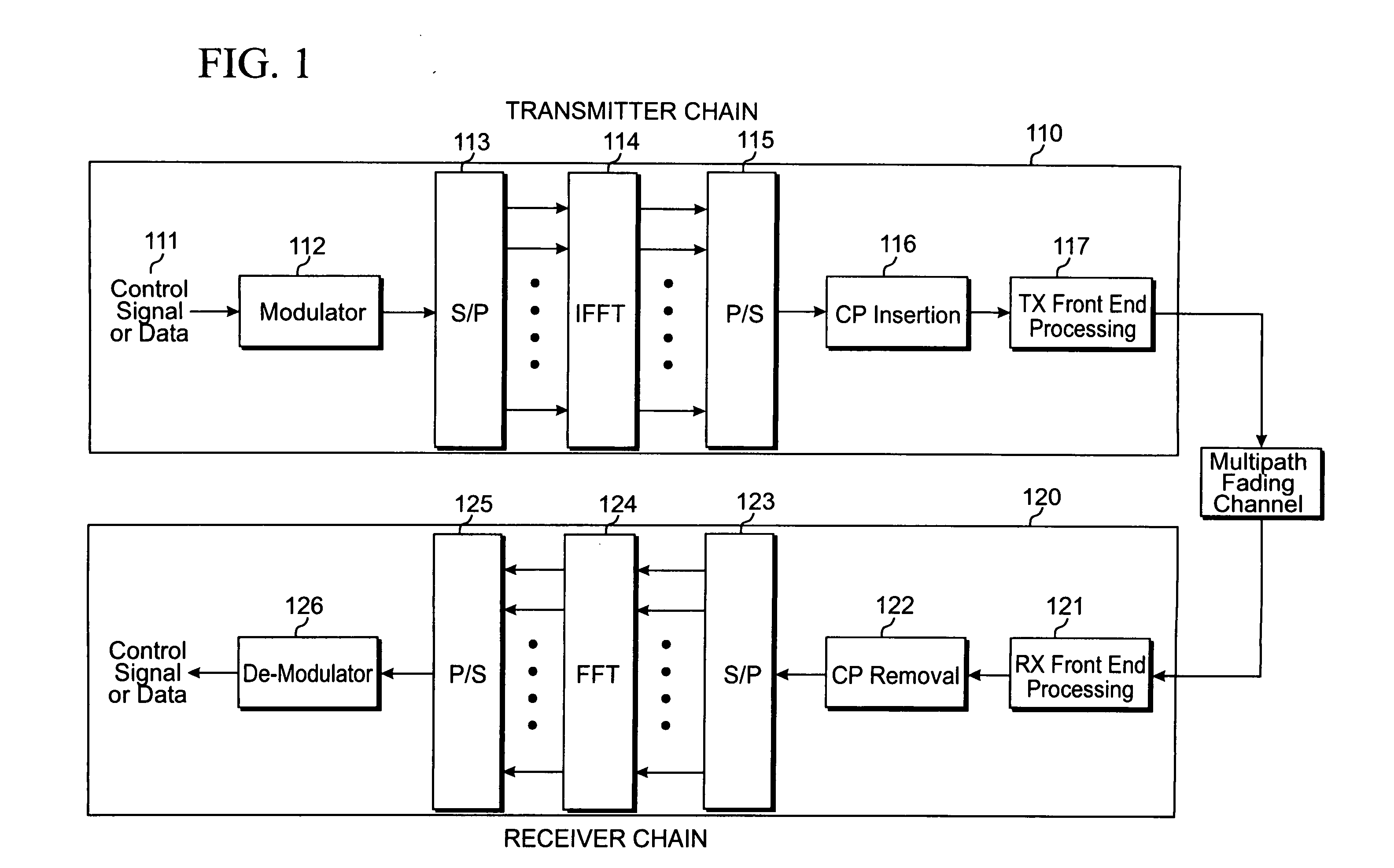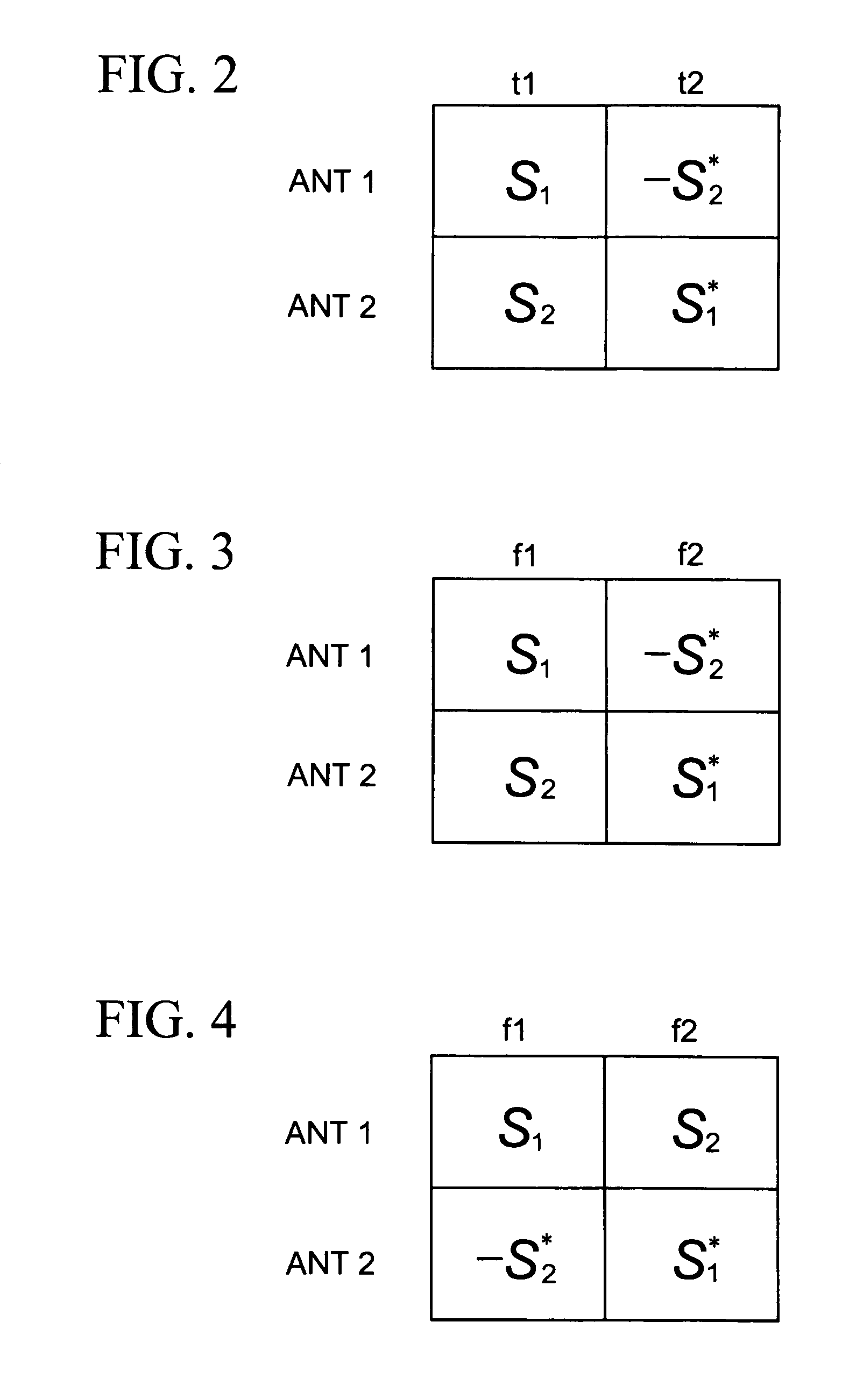Transmission symbols mapping for antenna diversity
a technology of transmission symbols and antenna diversity, applied in the field of transmission symbols mapping for antenna diversity, can solve the problems of small changes in differential propagation delay, large changes in individual wave phases, and difficulty in implementing a scheme for two transmission antennas
- Summary
- Abstract
- Description
- Claims
- Application Information
AI Technical Summary
Problems solved by technology
Method used
Image
Examples
first embodiment
[0058]In a first embodiment according to the principles of the present invention, we propose a SFBC−FSTD scheme where mapping of symbols to antennas is changed on repeated symbols as shown in FIG. 6. In this example we assumed that four symbols S1, S2, S3 and S4 are transmitted with one repetition over eight subcarriers. In the first four subcarriers, symbols S1 and S2 are transmitted on antennas ports ANT0 and ANT1, while symbols S3 and S4 are transmitted on antennas ports ANT2 and ANT3. On repetition in the next four subcarriers, the symbols S1 and S2 are transmitted on antennas ports ANT2 and ANT3, while symbols S3 and S4 are transmitted on antennas ports ANT0 and ANT1. This proposed mapping results in greater diversity gain compared to the transmission where mapping does not change on repetition. This diversity gains stems from the fact that after one repetition all the four symbols are transmitted from all the four transmit antennas.
[0059]In the proposed mapping scheme in the f...
second embodiment
[0060]In a second embodiment according to the principles of the present invention as shown in FIG. 7, the transmitted symbols S1, S2, S3 and S4 are repeated three times. In this case, the transmission matrix T1 is used for first transmission and second repetition, while the transmission matrix T2 is used for first and third repetitions.
third embodiment
[0061]In a third embodiment according to the principles of the present invention as shown in FIG. 8, the transmitted symbols S1, S2, S3 and S4 are repeated N>2 times, where the N−1 repetitions are ‘full repetition’ and the last one is partial repetition in that only part of the symbols S1, S2, S3 and S4 are repeated. As shown in FIG. 8, the first and second repetitions are full repetitions while the third repetition is a partial repetition. The two transmission matrices T1 and T2 are applied to these N repetitions in an alternating fashion, such that the first repetition uses T1, second repetition uses T2, etc.
PUM
 Login to View More
Login to View More Abstract
Description
Claims
Application Information
 Login to View More
Login to View More - R&D
- Intellectual Property
- Life Sciences
- Materials
- Tech Scout
- Unparalleled Data Quality
- Higher Quality Content
- 60% Fewer Hallucinations
Browse by: Latest US Patents, China's latest patents, Technical Efficacy Thesaurus, Application Domain, Technology Topic, Popular Technical Reports.
© 2025 PatSnap. All rights reserved.Legal|Privacy policy|Modern Slavery Act Transparency Statement|Sitemap|About US| Contact US: help@patsnap.com



